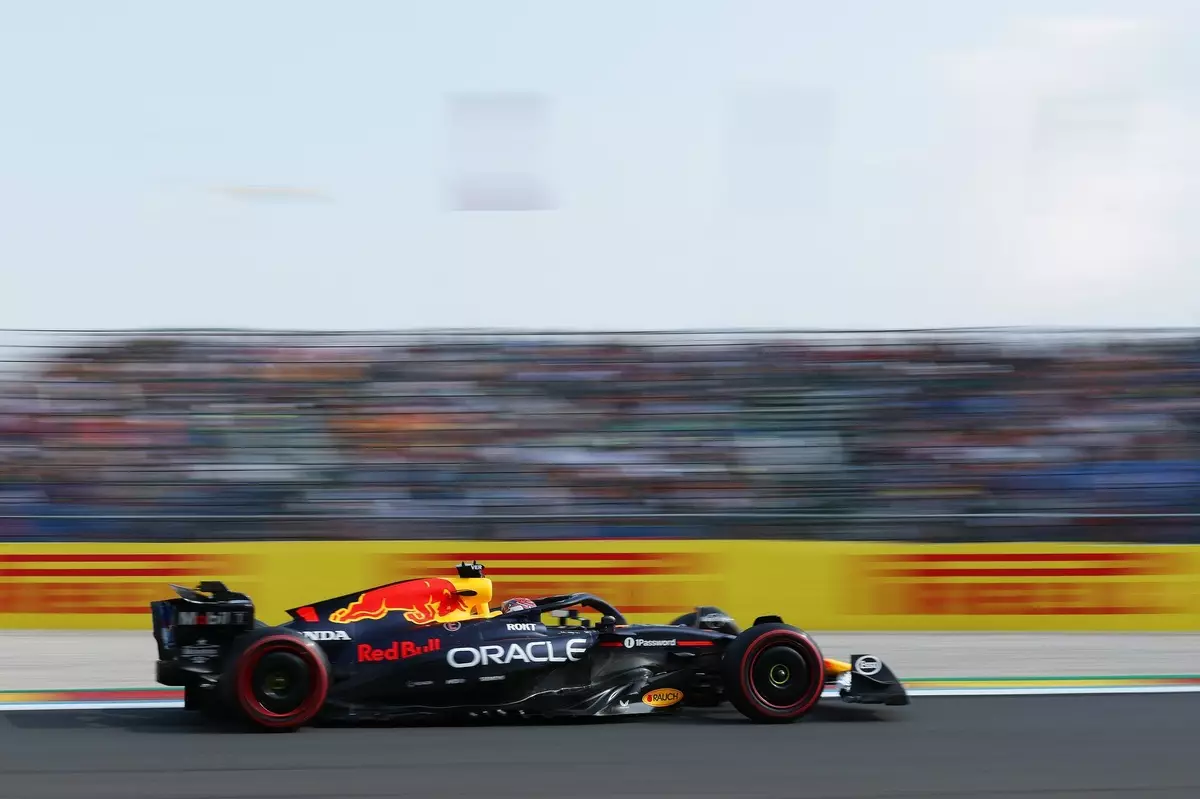In the high-stakes world of Formula 1, qualifying sessions are where fractions of a second define destiny. The Belgian Grand Prix showcased an intriguing battle, with Max Verstappen facing a perplexing challenge that seemed elusive despite ongoing updates and strategic efforts. Despite Red Bull’s reputation for engineering prowess, Verstappen was unable to close the gap to Oscar Piastri, highlighting a critical shortcoming in their current approach.
Verstappen’s performance was compromised in the second sector, where he lost nearly four-tenths of a second—a deficit that proved pivotal. This loss prevented him from mounting a serious challenge to Piastri, who emerged as the frontrunner in sprint qualifying. The Dutch driver’s inability to match McLaren’s consistency exposed a truth many fans and analysts have suspected for some time: even the most advanced F1 cars can be vulnerable if the underlying setup doesn’t perfectly align with the circuit’s demands.
While Red Bull introduced numerous updates to Verstappen’s car, the results suggested a more fundamental issue—balance. The team had hoped that refinements would help bridge the gap, but the sector two shortfall revealed that the problem was not merely technical but rooted in the car’s setup philosophy. Helmut Marko observed that despite the updates, “it’s not enough to fight Piastri,” emphasizing that the core issue remained unresolved. The gap, nearly half a second on Piastri, is a sobering reflection of the fierce competitiveness McLaren has achieved this weekend.
Strategy and Trade-offs: Downforce Versus Top Speed
A core challenge in modern F1 engineering revolves around achieving the perfect balance between downforce for cornering and top speed along straights. Red Bull’s advantage traditionally lies in its high-speed stability, a feature that Verstappen noted with some pride. Despite that, the session revealed that McLaren’s pace in sectors one and three—areas of lower downforce reliance—was superior, primarily thanks to their car’s better straight-line speed.
Verstappen’s top speed hovered just above 345 km/h, whereas Piastri managed a faster 341.4 km/h, yet it was still insufficient. The dynamics underscore how minute adjustments in car setup can have outsized impacts on qualifying performance. Marko explicitly acknowledged the dilemma: “Adding more downforce costs us too much on the straights,” and thus, the team faces a persistent balancing act.
This strategic compromise leaves Verstappen in a tricky spot. Despite recent upgrades, the car still doesn’t possess the optimal configuration needed for pole position. The pursuit of higher downforce can improve lap times in tighter sections, but the straight-line speed deficit remains a critical limiting factor. The persistent gap signifies a need for either a new avenue of development or a more refined approach to setups—a task easier said than done in the complex engineering tapestry of F1.
The Human Element: The Challenge of Consistency and Team Dynamics
While Verstappen grapples with technical setbacks, his teammate Yuki Tsunoda highlights the ongoing struggle of driver performance within the same team environment. Outqualified by Verstappen yet again, Tsunoda has yet to reach the final qualifying segment in all twelve attempts with Red Bull, a stark indicator of ongoing development issues.
Tsunoda’s situation illustrates how the broader team strategies and upgrade distribution play a role in driver results. With Tsunoda missing out on the latest upgrades, his performance naturally lags behind Verstappen’s, exposing the importance of resources and development focus. Yet, Tsunoda remains determined to improve, despite the frustration of close misses.
Helmut Marko’s assessment that Tsunoda “won’t be fighting for points in the sprint” adds a dose of realism but also underscores that driver improvement is an incremental process. His prospects for a stronger race hinge on a combination of track conditions, upgrade availability, and an increased focus on qualifying form.
Verstappen’s admission that “going faster or slower on the straights” won’t significantly alter his qualifying position at this stage carries an air of acceptance mixed with strategic humility. It signals a recognition that the fundamental challenge lies beneath the surface—an intricate box of aerodynamics, power management, and driving finesse that must be aligned perfectly for success.
In essence, this qualifying session exposes the ongoing narrative in modern F1: relentless quest for perfection amid inherent limitations. Verstappen’s struggles aren’t solely about raw speed but involve the delicate dance of engineering, strategy, and driver skill—where every tenth counts and the margin for error is razor-thin. As McLaren continues to innovate and push boundaries, Red Bull’s current setbacks serve as a stark reminder that even champions can encounter rough patches on the road to glory.

